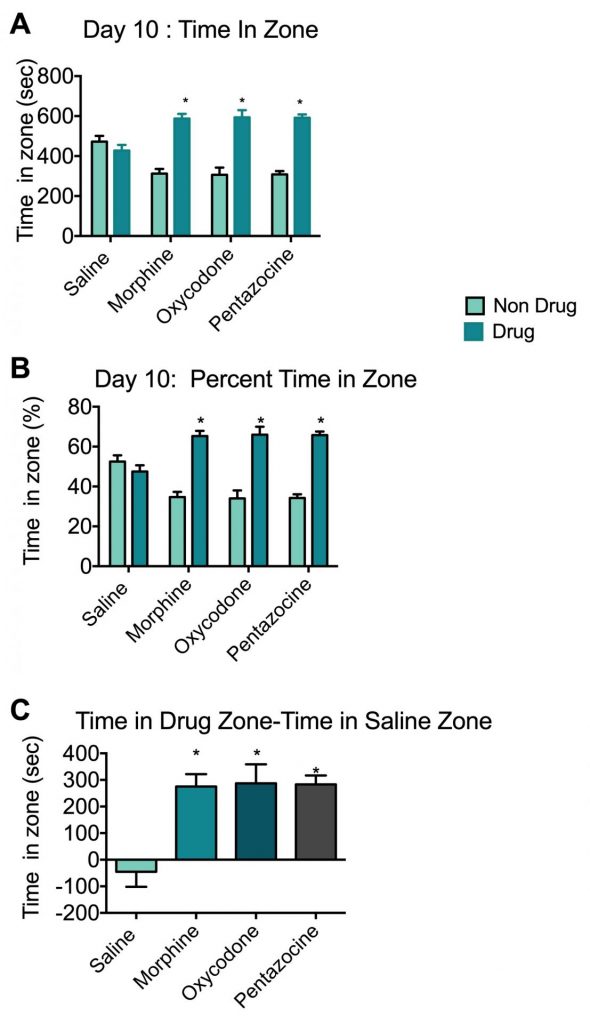Conditioned Place Preference
Discover how Melior’s unique phenotypic screening platforms can uncover the untapped value of your candidate therapeutic
The conditioned place preference model (CPP) is a standard preclinical behavioural model used to measure the rewarding effects of drugs.
This model allows measurement of the reinforcing properties of a drug in the absence of the drug itself. Animals learn, through Pavlovian conditioning, to associate a particular location with a particular stimulus in contrast to a location where the stimulus is absent.
Following several days of training in a test chamber, on the test day animals are allowed to choose the side of the chamber that they prefer, and in the case of drugs with known abuse potential this is usually the side associated with the drug during the training sessions.
In this study, MORPH, OXY and (-)PTZC were characterized for their ability to induce conditioned place preference. This study measured the time spent in the drug-paired chamber in pre- and post- conditioning sessions.

Figure 1. Expression of Conditioned Place Preference (CPP) on Day 10 (test day). Animals were trained to test compounds for 4 days. On the test day no compounds were administered. The figure represents the total time (A) and the percent of time (B) spent in the drug-paired chamber versus the saline-paired chamber as well as the difference between time in drug-pair versus time in saline-paired chambers (C).
*P<0.05, Two-way ANOVA with Tukey’s Multiple Comparison test for data in Panels A and B. *P<0.05, One-way ANOVA with Dunnett’s test for the data in Panel C.
Compared to more sophisticated models of abuse liability such as Drug Discrimination and Self Administration, the Conditioned Place Preference Model is a relatively faster model to perform. Most studies are completed as about a 2 week procedure. It is typically performed in rats.
